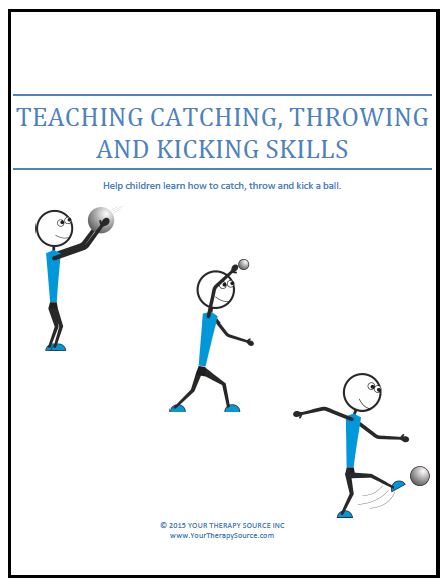Interceptive Timing, Eye-Hand Coordination, and Academic Skills in Children
 Interceptive Timing, Eye-Hand Coordination, and Academic Skills in Children
Interceptive Timing, Eye-Hand Coordination, and Academic Skills in Children
Psychological Science recently published research on interceptive timing, eye-hand coordination, and academic skills in children. The study collected objective measures of interceptive timing, general motor skills, and national standardized academic attainment from 309 school children ages 5 through 11.
What is interceptive timing?
Interceptive timing is your sensory motor ability to interact with a moving target while you are moving. When you swing a bat at a moving ball you are using interceptive timing. You need to time your swing (you are moving) to hit the ball (the ball is also moving). The ability to use interceptive timing requires spatial and temporal accuracy which developmentally occur later in a child’s developmental skill acquisition after children learn how to interact with non-moving objects.
To run and catch a ball, children’s interceptive timing skills rely on controlling all of their muscle movement while processing information on a nonlinear, moving object in different environments. There can also be additional information to process such as other children around them, verbal directions or background noise that will all influence interceptive timing.
Methodology of Study
The methodology of this study included various tasks for the children to complete. The goal of the tasks was to determine how the brain predicts the movement of objects through time and space. Various skills were assessed.
- An interceptive-timing task was developed with 54 moving targets that included three target speeds and three target widths were presented. The task involved hitting a moving object with an on-screen bat. The number of targets hit was recorded as the interceptive timing score.
- Various manual dexterity tasks were completed on a tablet using the Kinematic Assessment Tool to distinguish differences in general motor skills versus interceptive timing ability.
- The steering task required the children to trace a line while staying in a moving box to measure timing and accuracy.
- The aiming tasks required the children to make aiming movement towards circular targets. Movement time from circular target to circular target was measured.
- Spatiotemporal accuracy was measured using a tracking task (of different speeds) in a figure 8 pattern with and without guidelines.
- Postural control was measured using a Nintendo Wii Fit board center or pressure measurements with eyes open an closed.
- Academic ability was recorded using nationally standardized academic-attainment scores for mathematics, reading, and writing.
Results of the study on Interceptive Timing, Eye-Hand Coordination, and Academic Skills in Children
Data analysis indicated the following:
- interceptive timing may have a specific relationship with mathematics but not educational attainment in general.
- fine motor skills and eye-hand coordination showed a more general relationship with attainment measures: steering fine motor measure scored accounted for approximately 9 months of difference in reading, writing, and mathematics attainment, aiming had a possible relationship with math, reading and writing and tracking showed a likely relationship between math and writing.
- balance measures of gross motor skills showed no clear relationship with mathematical or reading attainment scores, though there did seem to be a relationship between balance with eyes closed and writing attainment possibly indicating why a stable base when performing writing tasks is important.
The researchers concluded that interceptive-timing ability can predict mathematical performance in primary school children. In addition, there was a relationship between fine motor tasks (steering and aiming) and mathematics attainment along with a generalized relationship between fine motor skills and all the educational attainment measures (mathematics, reading, and writing). The results of this study support previous research indicating that sensorimotor systems and cognitive abilities are intrinsically linked.
Reference: Giles, O. T., Shire, K. A., Hill, L. J., Mushtaq, F., Waterman, A., Holt, R., … & Mon-Williams, M. (2018). Hitting the target: Mathematical attainment in children is related to interceptive timing ability. Psychological Science.
Do you need help teaching children to catch, throw and kick? Teaching Catching, Throwing and Kicking Skills: Help children learn how to catch, throw and kick with this packet full of information of age progression of skills, visual picture cards, tips, letter to parents and more! FIND OUT MORE INFORMATION.
Read more:
Teaching Throwing and Catching to Children with DCD
10 ways to perform catching and throwing drills in children that they can do all by themselves
Motor Coordination and Academic Achievement

 Interceptive Timing, Eye-Hand Coordination, and Academic Skills in Children
Interceptive Timing, Eye-Hand Coordination, and Academic Skills in Children


